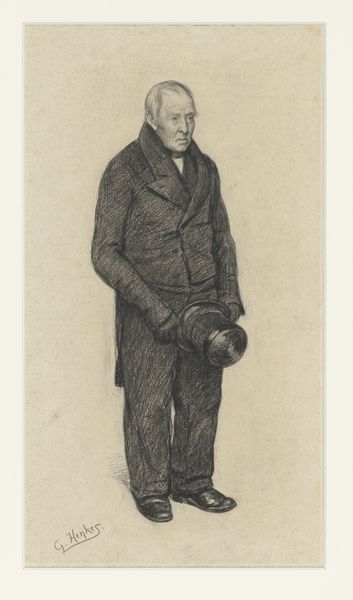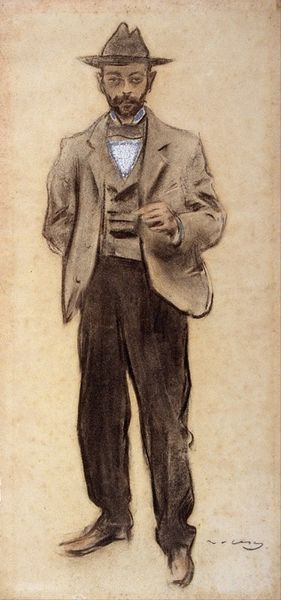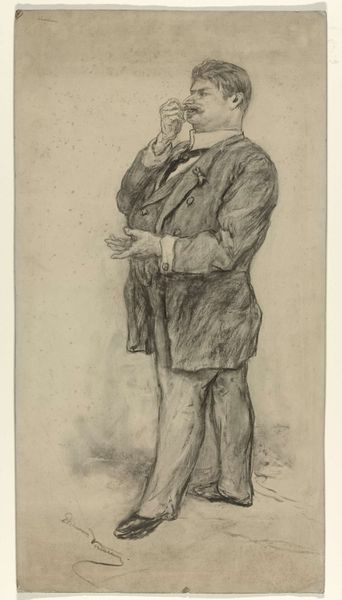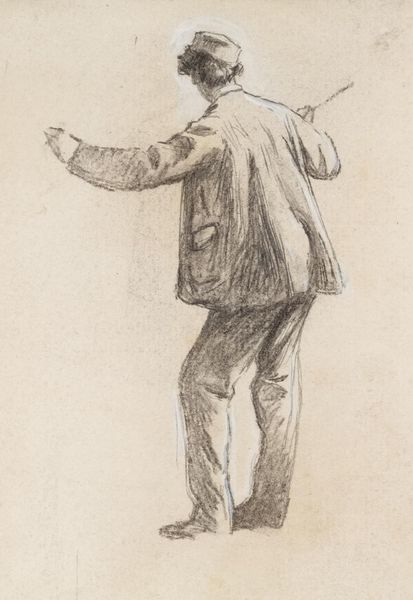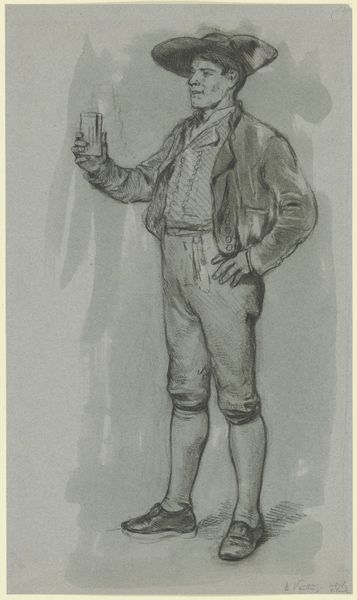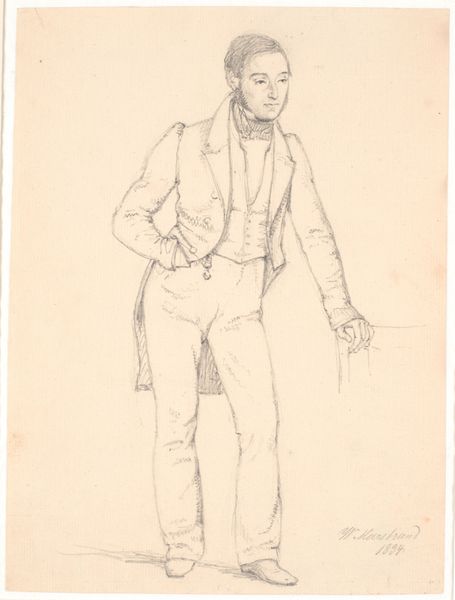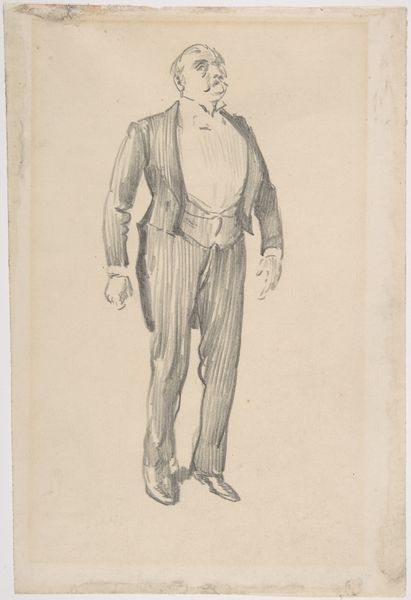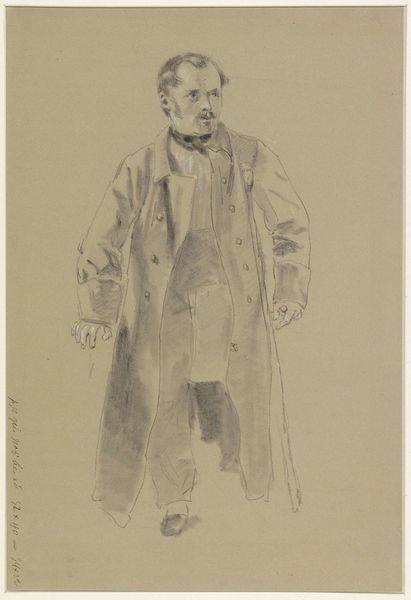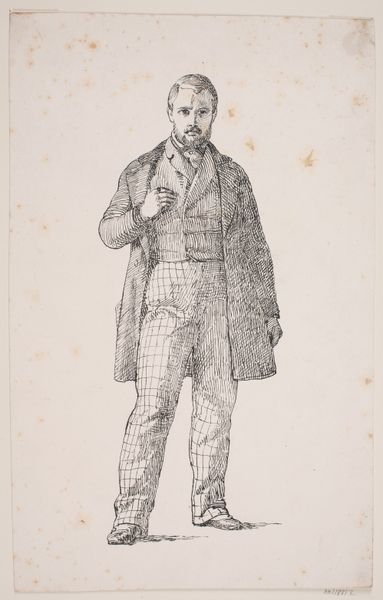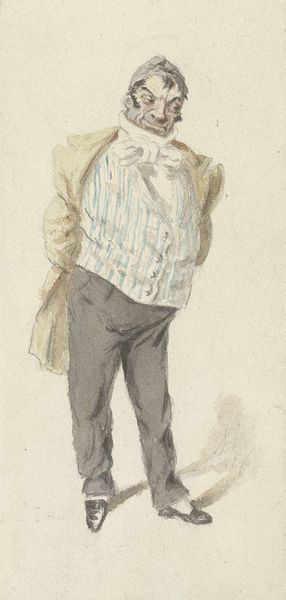
#
pencil drawn
#
amateur sketch
#
light pencil work
#
shading to add clarity
#
pencil sketch
#
idea generation sketch
#
pencil drawing
#
pen-ink sketch
#
portrait drawing
#
pencil work
Dimensions: height 199 mm, width 116 mm
Copyright: Rijks Museum: Open Domain
Curator: Here we have Theo van Hoytema’s "Standing Man in Overcoat," likely created between 1878 and 1917. Editor: There’s an incredible vulnerability here. It's a quick sketch, yet it feels like I'm face-to-face with someone wrestling with…something. The lack of precise detail draws me into a quest to try and provide that detail, like the picture relies on the viewer. Curator: It’s interesting that you say “vulnerable,” given the time. We are looking at a study, probably for a larger piece, or perhaps simply exploring a subject who resonated with van Hoytema. This was a period rife with discussions about labor, class, and evolving masculine identities. A seemingly simple sketch opens into so many readings! Editor: Absolutely. The rough pencil work…it speaks to a directness, an urgency. What pencil and paper would have been available to van Hoytema, and what socioeconomic factors allowed this man, the sitter, to purchase his finery to appear dignified? Was Hoytema sympathetic or antagonistic to his class? It's a contrast between the materials and labour that made both the image and sitter *possible*. Curator: A very sharp point about materials there. Van Hoytema, while certainly capable of highly polished work, seemed to embrace sketching as a way to understand the inner lives of his subjects, which may speak to him having compassion toward working class figures. He sought to capture a psychological depth beneath the surface, resisting the formal portraiture conventions of the era that often served to aggrandize the sitter’s status. We might want to investigate whether this subverts existing societal powers. Editor: You know, seeing it that way gives it an entirely new layer. It ceases being just a sketch of a man in a coat; it transforms into a social document reflecting material conditions and their complex relationship to the art produced. I see how Hoytema using these particular, more rough, materials acts almost as a subversive statement in and of itself. Curator: Exactly. His choice elevates the medium, granting it expressive power beyond mere reproduction, and that allows space for cultural analysis. Thank you, as always, for opening this up, because the historical lens allows the chance to examine an early stage in a particular, intersectional way of seeing, so often overlooked in traditional surveys. Editor: And thanks to you; situating artistic practices firmly within the framework of material conditions really highlights these historical-material influences.
Comments
No comments
Be the first to comment and join the conversation on the ultimate creative platform.
